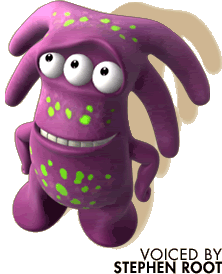 skin them all alive... then set their azzes on fire!!!
skin them all alive... then set their azzes on fire!!!
Posted on 04/04/2008 10:42:37 AM PDT by Ernest_at_the_Beach
The trial of eight British men accused of plotting to blow up seven airliners using liquid explosives began yesterday at Woolwich Crown Court, where prosecutor Peter Wright QC laid out details of their alleged plan. Using a home made liquid explosive mixture concealed in soft drinks containers the accused intended to set off the explosions when all the aircraft were at high altitude, he said, causing thousands of casualties.
The prosecution claimed that the explosive was planned to consist of hydrogen peroxide mixed with a powdered version of the fruit drink Tang. The addition of Tang, "which is an energetic compound", would aid detonation, said Wright. He claimed that the mixture was intended to be dyed to match the colour of a soft drink, then substituted for the contents of 500ml bottles of Lucozade and Oasis. The original contents of these would be extracted without breaking the seal by means of a syringe, and the resulting hole in the base of the bottle sealed with superglue.
The jury was told that the bombs were to have been detonated using hexamethylene triperoxide diamine (HMTD), an explosive compound prepared using hydrogen peroxide and hexamine. This mix would be concealed in hollowed out batteries, and put together with the liquid explosives and a power source, possibly a disposable camera, once the flight was airborne.
A diary which Wright said was found on one of the accused gave details of the planning. "Mouthwash, blue, red. Calculate exact drops of Tang, plus colour. Make in HP." And: "Lucozade, red, 1.5 drops, one teaspoon Tang, one teaspoon orange, 12 drops. Oasis, red. On, red dye. Orange, two times mango."
The men were arrested in August 2006 leading to a worldwide clamp-down on liquids in carry-on baggage, with the ban initially extending even to jam sandwiches, and leading to debates over the relative explosive capabilities of hard and soft cheeses.
Hydrogen peroxide is readily available in dilute form, which can with some effort be converted to a more concentrated form viable in explosive mixtures. Tang, meanwhile, is available in liquid and powdered form, and is a fruit drink made by Kraft.
The trial continues, and is expected to last six to eight months. ®
It's the sugar. The oxidant.
When I was a kid we’d blow ourselves up with chemistry sets or a few simple ingredients available at drugstores. I’ll forever curse the lawyers and nanny-staters who made it impossible to sell the really good chemistry sets nowadays.
The inventor of Tang, William A. Mitchell, also invented Pop Rocks.
It has long been believed that Tang got its name from China because of its high content of sugar. The Chinese name for sugar is Tang.
A household tip says Tang is an excellent dishwasher cleaning agent due to its high citric acid content, although Kraft does not recommend it or advocate such use.
Source: http://www.freerepublic.com/perl/post?id=1996785%2C11
 skin them all alive... then set their azzes on fire!!!
skin them all alive... then set their azzes on fire!!!
Same here, never into property damage, just liked making things go boom. A 35mm film can filled with home-made flashpowder was great for taking chunks out of tree stumps.
pardon me Right but your wrong
The sugar in Tang is the reducing agent - the peroxide would be the oxidizing agent.
But if they mixed them together how id it not go boom when mixed - somebody know?
Lurking’
Sugar is fuel, not oxidizer. The first composite model rocket engines from the 1970s used sugar mixed with an oxidizing agent.
I still remember the Potassium Permanganate volcano, LOL.
And the ammonia is diluted about the same.
Many people have no clue just how powerful the most common household cleaning chemicals are, in their natural state.
It is why the chemicals must be so greatly diluted.
You could open a bottle of %50 ammonia, and whiff a smell of it, but you would only do it once.
See followon comments.
At airports I've been through recently, they just make you toss the drink.
That’s about the level of science on this BBS.
Thanks, I saw Pop rocks mentioned, they popped in my head too.. well, in my mouth technically but..
The artificial sweeteners used in the new formulation are Sucralose, acesulfame potassium, and Neotame.
Source: http://en.wikipedia.org/wiki/Tang_(drink)
As is Sodium Hypochlorite (bleach).
Which is the reason that when railroad tanker cars of ammonia are involved in an accident the authorities call hazardous materials specialists rather than Mr. Clean.
Tang would be the oxidizer.
Eight British men?
Here’s how
“The jury was told that the bombs were to have been detonated using hexamethylene triperoxide diamine (HMTD), an explosive compound prepared using hydrogen peroxide and hexamine.
This mix would be concealed in hollowed out batteries, and put together with the liquid explosives and a power source, possibly a disposable camera, once the flight was airborne.”
Are we ready to take on Algore’s science? Algore can’t read a meniscus, but can we?
Not Poon Tang. Yet.
Disclaimer: Opinions posted on Free Republic are those of the individual posters and do not necessarily represent the opinion of Free Republic or its management. All materials posted herein are protected by copyright law and the exemption for fair use of copyrighted works.